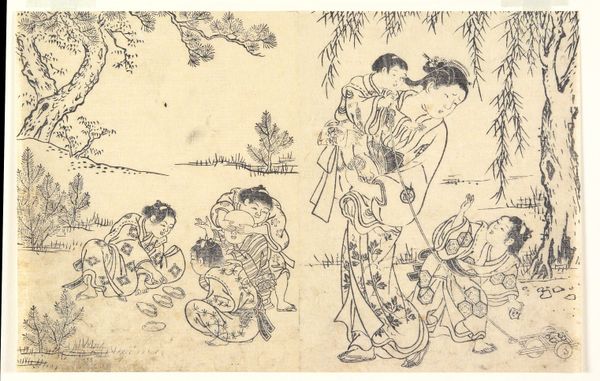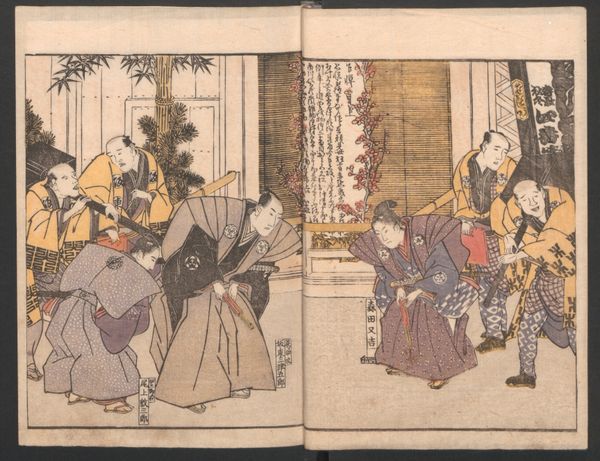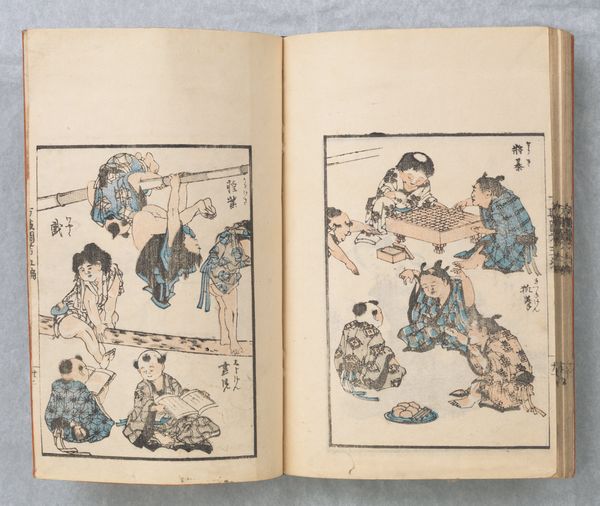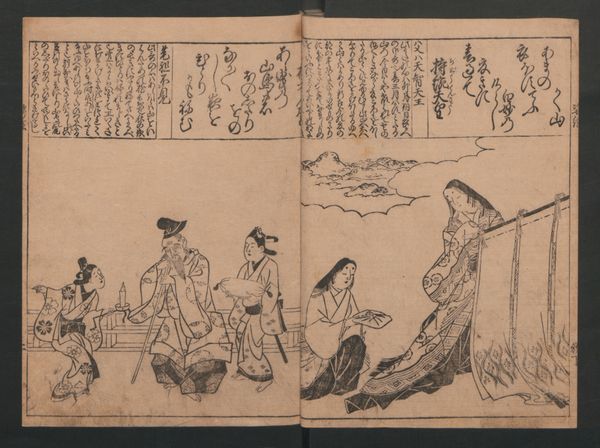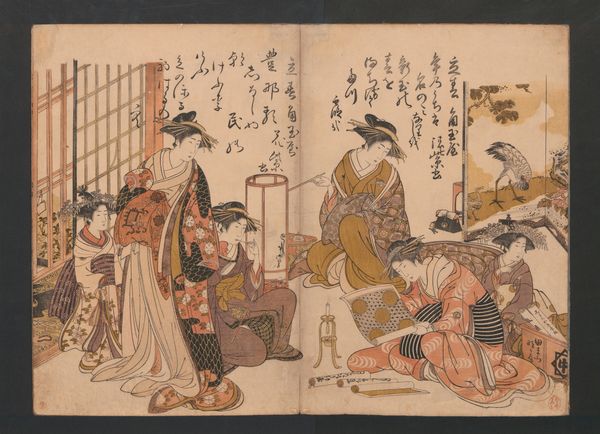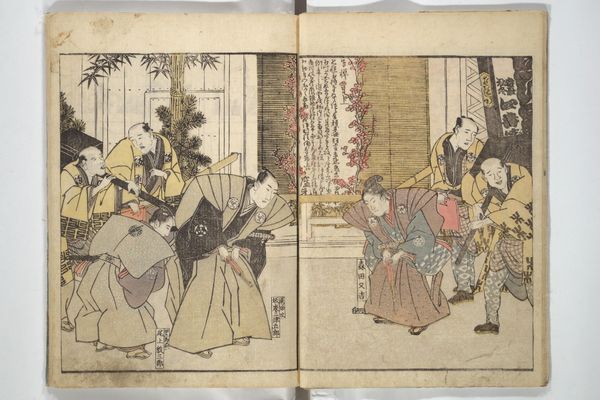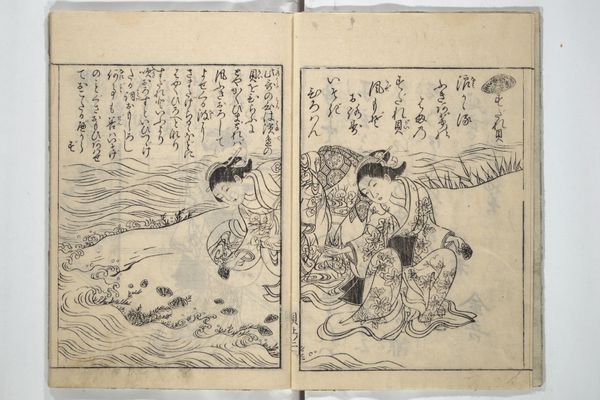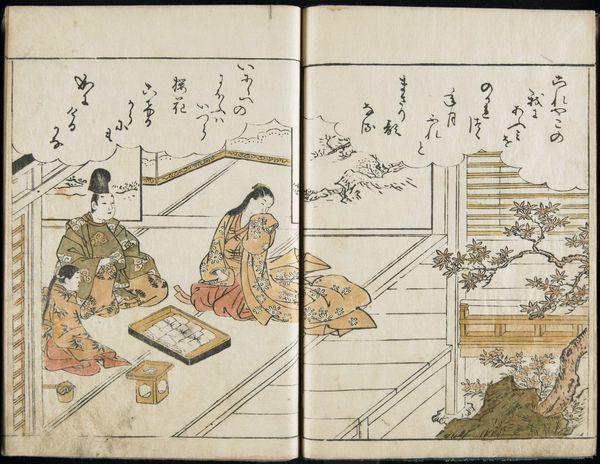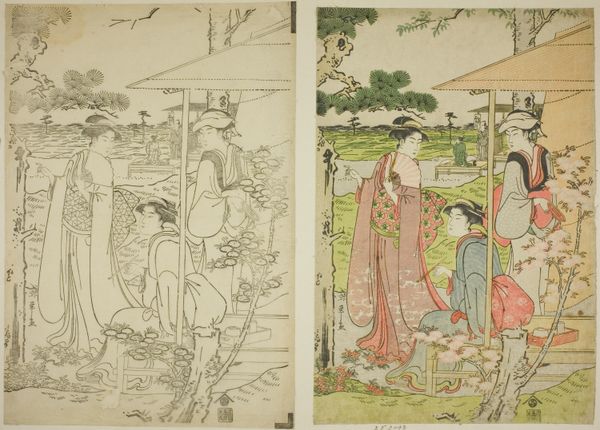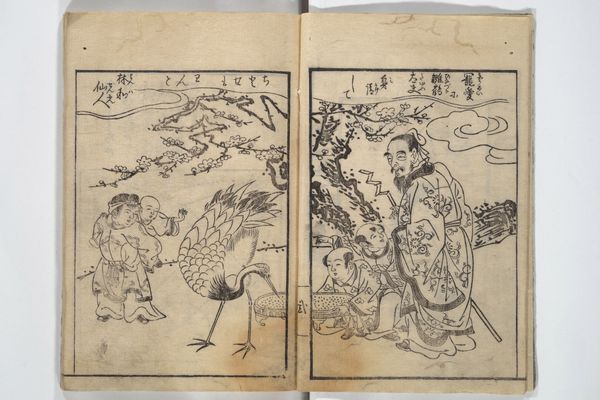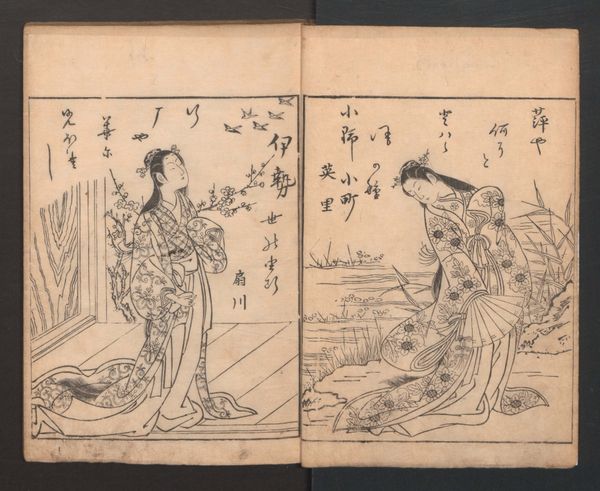
drawing, print, ink
#
portrait
#
drawing
#
ink drawing
#
pen drawing
# print
#
asian-art
#
ukiyo-e
#
japan
#
ink
#
genre-painting
Dimensions: 1/8 x 6 1/8 x 8 9/16 in. (0.3 x 15.6 x 21.7 cm)
Copyright: Public Domain
Editor: Here we have "Picture Book- Field of Vines" created around 1736 by Nishikawa Sukenobu. It looks like an ink drawing with print elements in an open book format. It seems to depict a peaceful everyday scene, a tranquil slice of life. What cultural narratives might be woven into such a scene? Curator: Notice how the seemingly simple, serene imagery echoes deeper cultural patterns. Sukenobu employs common symbolic shorthands. The willow tree, for example, frequently appears in East Asian art as a signifier of grace, flexibility, and even, perhaps paradoxically, of steadfastness in adversity. Its presence near the figures speaks volumes. Don't you think? Editor: Absolutely! I hadn't immediately focused on the willow. So, its inclusion isn’t arbitrary at all? Curator: Precisely. And consider the children's games depicted. They aren’t merely diversions; such activities, rendered consistently across generations of art, form a visual link connecting people to cultural memory. We’re observing the continuation of tradition made visible. How fascinating is that! Editor: It's fascinating. It makes you think about the roles each person plays, too – the mother, the playful children, all participating in this visual lexicon. Curator: Indeed! And even the compositional choices – the arrangement of figures in relation to nature – these decisions contribute to the ongoing symbolic dialogue. This gives voice to everyday lives in the context of something much larger than themselves, doesn't it? Editor: Definitely! Now I understand why what initially appeared like a simple drawing carries layers of meaning and cultural significance. It is amazing how many signifiers we can notice! Curator: It becomes a kind of historical mirror, reflecting shared values and the persistence of collective memory, doesn't it? That’s the captivating thing about these symbolic frameworks. Editor: Thanks for showing me the connections. Now, I can see there’s so much more depth and intention within these seemingly simple representations of everyday life.
Comments
minneapolisinstituteofart about 2 years ago
⋮
The early ukiyo-e master Nishikawa Sukenobu began his career as a book illustrator, but his images of youthful women were so popular that his publishers soon commissioned him to create picture books solely devoted to his vision of feminine beauty. Rather than illustrating a story, these picture books (e-hon) usually feature a collection of independent compositions showing groups of women. This book, the first in a set of three, is typical of Sukenobu's approach. The title, Field of Vines, is a metaphor for something eternal or endless. In this case, Sukenobu undoubtedly meant the eternal quality of beauty. Here, he illustrates two fashionable women getting dressed with the help of their maid, shown kneeling before the mirror stand.
Join the conversation
Join millions of artists and users on Artera today and experience the ultimate creative platform.
